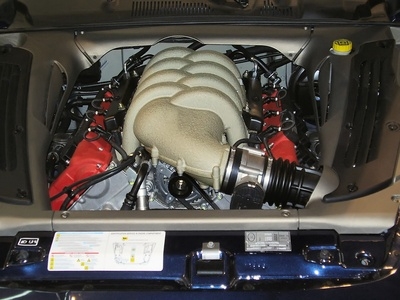
Mazda introduced its Multi-Purpose Vehicle (MPV) in 1989 to compete in the mini-van market. It comes with a plastic radiator that has an aluminum core. While the aluminum core can rust, the plastic exterior is vulnerable to breakage, punctures and blockages from road debris. Whether the damage is interior or exterior, it must be repaired so that the radiator can perform its crucial function of keeping the coolant temperature low enough to prevent the engine from overheating. Most damage to the radiator can be repaired at home.
Identify the leak location by viewing the MPV radiator's surface, the hose connectors and the hoses. Any breaks or tears in the radiator or hoses will allow coolant to escape and may be visible without the engine running. Check for coolant on the ground, which may provide a clue as to the location of a leak.
You can also pressure test the radiator with a pressure test kit, which attaches to the opening after the radiator cap is removed. This will reveal the functioning level of the radiator. Low pressure indicates a leak in the cooling system.
Clean the radiator surface with high pressure air or water. This removes dirt, rocks, leaves and insects that can create blockages, but it also helps reveal punctures that allow coolant to seep out of the radiator. Blockages to the radiator can restrict air flow, which is important for dissipating heat from the radiator. The radiator in the Mazda MPV sits right behind the front grille, making it prone to blockages from road debris.
Detach a broken, ripped or torn hose by unscrewing the metal rings at the ends and removing the hose. While the hose is off, check the rings. If they are damaged, replace them as well. Also check the radiator hose connectors for damage.
Replace s damaged radiator cap on your Mazda MPV by removing and simply screwing on a new cap. Do not attempt to repair the radiator cap's rubber seal because it still may not allow the radiator to hold its pressure properly.
Sand any damaged areas, including a puncture or a break. Heat the area with the air-free plastic cooler and melt the plastic welding rod into the area until the rod takes on the color of the radiator. If repairing a break, press both sides together with the welding rod in the middle until it bonds them. Allow time to set.
For small holes in the radiator surface, fill them with epoxy and give it time to set.
Unscrew the radiator cap and add radiator coolant system sealant into the radiator. If there are holes in the aluminum core, the coolant system sealant will fill the leaks. Fill the radiator with the proper coolant/water mixture for your Mazda MPV.